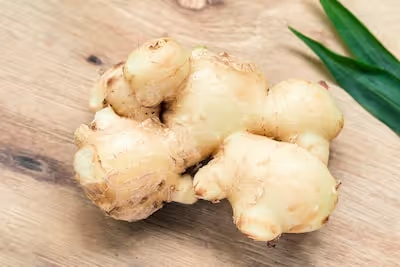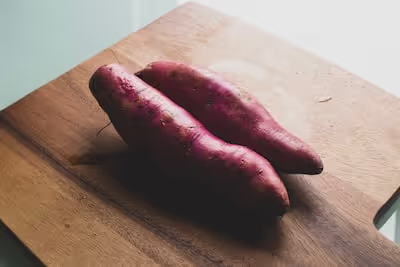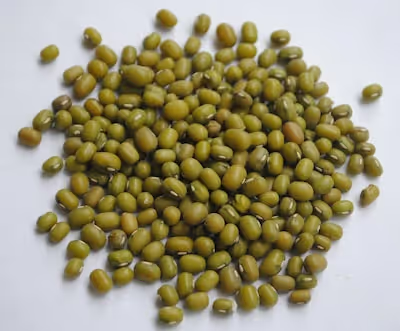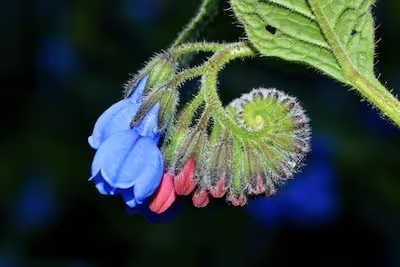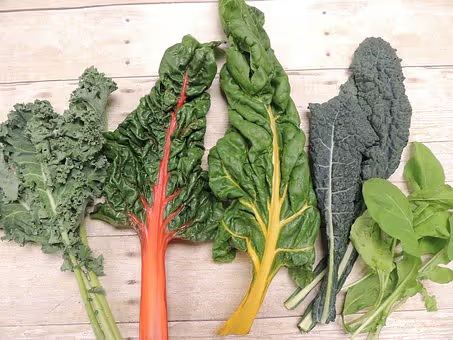Growing Blackcurrant: How to Plant, Care For & Harvest Berries
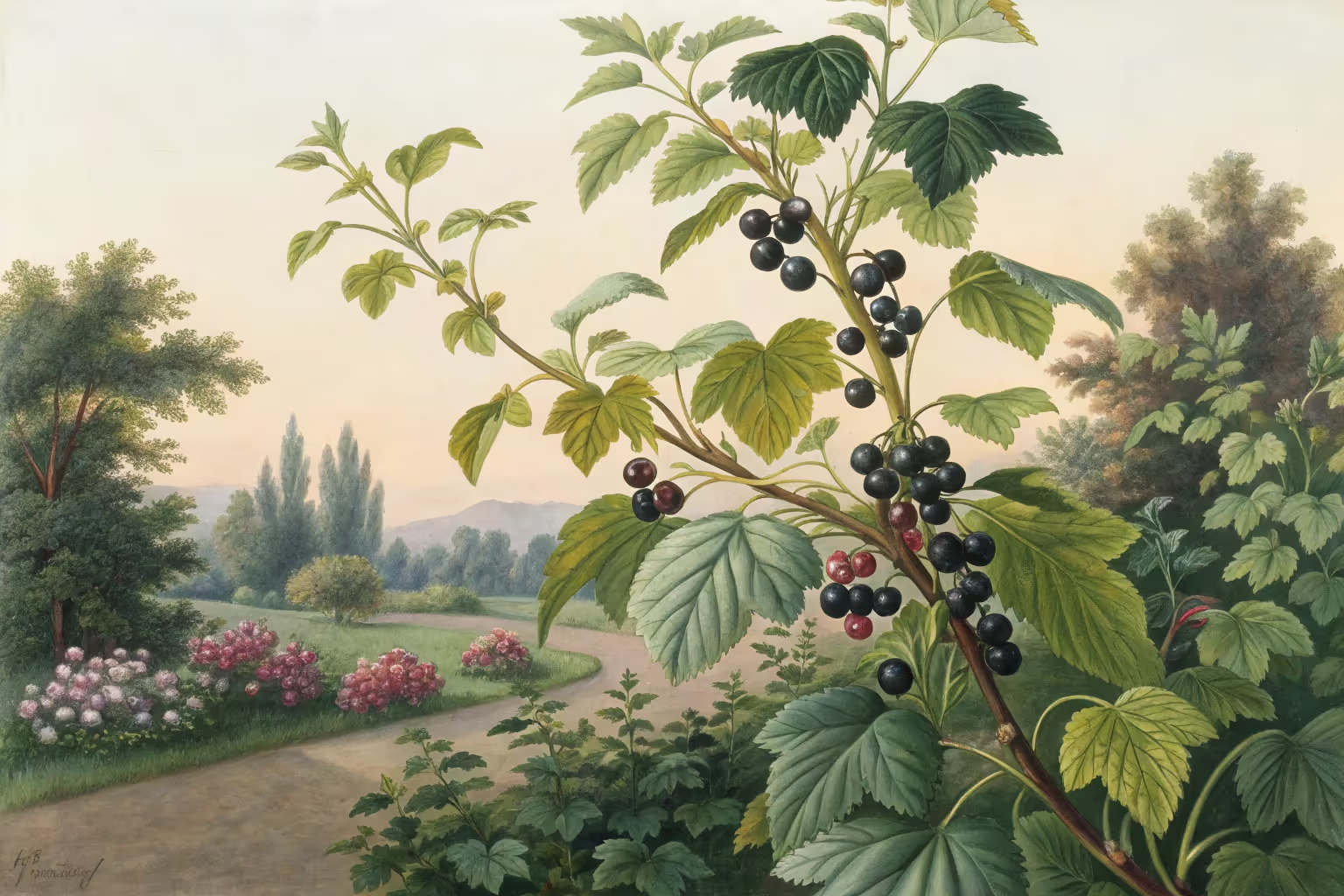
Growing Blackcurrant
Growing blackcurrant rewards you with tart, juicy berries packed with vitamin C, antioxidants, and vibrant flavor. Plant blackcurrants in rich, well-drained soil with plenty of sun, prune them annually to encourage strong fruiting branches, and mulch generously to retain moisture. If you're curious about the art of cultivating these dark beauties, read on—I promise they're worth the effort.
Cheatsheet: Blackcurrant Berry Mastery
🌱 Site & Soil Selection
- Full sun to light shade, shelter from wind
- Well-drained, fertile soil; pH 6.0-6.5
- Rich in organic matter
- Rotate plots to avoid disease build-up
🪓 Tools and Products You'll Need
- Spade
- Secateurs or pruning shears
- Watering can or hose
- Mulch (compost or straw)
- Organic fertilizer
- Gardening gloves
- 1- to 2-year-old bare-root or potted blackcurrant plants
- Compost or well-rotted manure
- Mulch material
🌳 Planting
- Plant late autumn or early spring.
- Dig hole 18 in / 45 cm wide & deep.
- Mix compost into soil.
- Set plant 2 in / 5 cm deeper than previous soil line.
- Space bushes 5 ft / 1.5 m apart.
- Water well after planting.
🌼 Maintenance
- Water weekly during fruit set
- Add mulch each spring
- Feed with high-potash fertilizer in spring
- Prune after harvest: remove 1/3 of oldest stems
- Protect from birds with netting
🍇 Harvesting
- Harvest mid-summer when berries are deep purple-black
- Pick entire strigs (clusters) gently
- Yield: Up to 10 lb (4.5 kg) per mature bush
- Store fresh up to 2 weeks at 35°F / 2°C
- Freeze for year-round use
💪 Nutrition & Self-Sufficiency
- Rich in vitamin C (4x more than oranges)
- Contains antioxidants, fiber, potassium
- Homegrown berries reduce food miles
Growing Blackcurrant: how I plant, care for, and harvest buckets of berries
The first time I tasted a ripe strig I understood why chefs chase this fruit like truffles. It hits with tart bass notes, then finishes like forest honey.
I grow them for jam, cordial, and for the birds I fail to outsmart each summer.
Site and soil: set the table for heavy crops
Blackcurrant likes cool roots, steady moisture, and air that keeps foliage dry. Full sun in cool-summer regions is ideal, while in hot zones I give light afternoon shade.
Aim for a pH of 6.0 to 6.5, rich loam, and no standing water. They sulk in alkaline clay and in scorching reflected heat.
- Soil test first, then amend with compost at 2 to 3 inches deep, 5 to 7.5 cm.
- If pH is high, add elemental sulfur per your test report. If too low, add garden lime modestly.
- Mulch immediately, 3 to 4 inches, 7.5 to 10 cm, to hold moisture.
Planting calendar and method
Bare-root plants go in while dormant, late fall to early spring. Container plants settle in spring once soil is workable.
I plant them a touch deep to spark new basal shoots. Set the crown 2 inches below grade, about 5 cm.
- Soak bare roots 30 to 60 minutes.
- Dig a wide hole, mix in compost, and water the hole first.
- Angle slightly and plant deep, then prune every shoot back to two buds to promote stooling.
Spacing for home rows: 4 to 5 feet between plants, 1.2 to 1.5 m, and 6 feet between rows, about 1.8 m. Give yourself room to prune and pick.
Climate and chill hours
Reliable crops need winter chill. Warm-winter gardens struggle unless you grow low-chill relatives like clove currant.
Most blackcurrant cultivars need roughly 800 to 1,000 chilling hours under 45 F, 7 C, for solid yields. Source: Cornell Cooperative Extension.
Water and feeding: steady beats flashy
Keep soil evenly moist during bloom and fruit swell. I target 1 to 1.5 inches of water per week, 25 to 38 mm, through rain or drip.
In early spring, I feed a light dose of balanced fertilizer, about 2 to 4 ounces 10-10-10 per bush, 60 to 120 g, then top-dress with compost. Overfeeding causes leafy, mildew-prone growth.
Training and pruning made simple
Blackcurrants fruit on one-year-old wood. The goal is a stool that renews itself each year.
- Year 1 after planting: cut all shoots back to two buds to force strong new canes.
- Winter years 2 to 3: keep 8 to 10 healthy canes and remove weak ones at the base.
- From year 4 onward: remove a quarter to a third of the oldest, darkest wood each winter and keep the same number of new basal shoots.
After a heavy crop, I also thin congested centers for airflow. Clean blades and cut flush at the base to avoid stubs.
Pollination and flowering
Most modern cultivars are self-fertile, but a second cultivar can lift yields and improve set. Bees adore the early bloom, so avoid spraying during flower.
Top cultivars I trust, by need
- Titania: tall, disease-tolerant, good flavor, widely used where white pine blister rust is a concern.
- Consort: rust immune selection, reliable in cold climates, smaller berries with punchy flavor.
- Ben Connan: large berries on a compact plant, easy picking in small spaces.
- Ben Sarek: dwarf habit, early, heavy crops in tight beds and containers.
- Ben Lomond: later ripening, fine for frosty springs, classic jam fruit.
- Ben Hope: good resistance to big bud mite, strong grower with rich juice.
- Crusader: sturdy and cold hardy, dependable backyard performer.
For heat-prone gardens, I find Titania and Ben Sarek cope best with afternoon shade and mulch. In very cold winters, Consort and Titania shrug off deep freezes.
Buying guide: getting quality plants and gear
- Bare-root vs container: bare-root is cheaper and establishes fast if planted dormant. Container plants offer flexibility if spring is your only window.
- Grade: seek well-branched 2-year stools with 3 or more canes. Avoid spindly whips with dried roots.
- Root health: creamy white interior when nicked, no sour smell, no circling roots.
- Must-have kit: sharp bypass pruners, drip line with 1 gph emitters, soil test kit, 15 to 19 mm bird netting, and a soft harvest tub.
Birds, bugs, and blights: my IPM playbook
Birds do more damage than all insects combined, so I net early at first blush. Pin the skirt so thrushes do not walk under like art thieves.
- American gooseberry mildew: white felt on tips and fruit. Fix with sunlight, pruning for airflow, and sulfur sprays if needed.
- Big bud mite: swollen buds that never open, vector for reversion virus. Prune out and destroy, then replant with resistant cultivars like Ben Hope or Titania if pressure stays high.
- Aphids: curled leaves and sticky honeydew. A hard water blast, soap sprays, and strong beneficial insect habitat keep them in check.
- Currant fruit fly: larvae in berries. Pick clean and remove windfalls fast, and use fine mesh at bloom if it is a yearly issue.
- Botrytis: grey mold in wet spells. Maintain strict sanitation and mulch rather than overhead water.
White pine blister rust and legal notes
Ribes were once restricted in parts of the United States due to white pine blister rust, and some local rules still exist. Check current regulations before ordering plants, and favor resistant cultivars where five-needle pines grow nearby.
Flower removal and fruit set
I strip off most flowers the first season to let the roots build. The payoff arrives in year two with strigs so heavy they clack against the tub.
Harvest, yield, and storage
Clusters ripen over 10 to 14 days. I pick whole strigs at the glossy-black stage for maximum juice and wine-dark color.
A mature bush can yield 6 to 10 pounds, 2.7 to 4.5 kg, under good care. In cooler, maritime climates I have hit 12 pounds, 5.4 kg, on Titania with drip and mulch.
Blackcurrants carry about 180 mg of vitamin C per 100 g. Source: USDA FoodData Central.
Refrigerate for 2 to 3 days or freeze on trays, then bag. I destem after freezing, which saves time and fingerprints.
Fertilizing rhythm for the home bed
- Late winter: compost top-dress, then mulch.
- Early spring: light granular feed, then water in.
- After harvest: kelp or fish emulsion if leaves look pale, then cease feeding to harden growth.
Avoid heavy nitrogen. It invites mildew and floppy canes.
Propagation: hardwood cuttings
In late fall to midwinter, I take 8 to 10 inch cuttings, 20 to 25 cm, from pencil-thick one-year wood. Heel into a sand and compost trench with two buds above soil.
Keep them evenly moist and you will have new stools by autumn. This is the cheapest way to fill a hedge.
Companions and layout
Plant on the north side of a bed so shrubs do not shade sun-hungry crops. I run chives and calendula at the dripline to pull pollinators and confuse aphids.
A low windbreak helps in spring to protect flowers. Avoid spots with potatoes or tomatoes right upwind if blight is rampant.
My planting recipe for hot-summer gardens
- Site with morning sun and dappled afternoon shade.
- Extra-deep mulch, 4 inches, 10 cm, and drip on a timer.
- White shade cloth during heat waves above 95 F, 35 C.
- Summer prune water sprouts and keep the center open.
Quick comparisons: blackcurrant vs close cousins
- Blackcurrant: tart, inky, high pectin, fruits on one-year wood, strongest aroma.
- Red currant: translucent, more acid, hangs well for weeks, great for jelly and garnishes.
- Jostaberry J. curtsii: blackcurrant x gooseberry hybrid, fewer thorns, bigger fruit, lower aroma, fewer disease issues.
- Clove currant Ribes odoratum: heat tolerant, fragrant spring bloom, lower chill, milder flavor.
Troubleshooting cheat sheet
- Lots of leaves, few berries: too little chill, too much nitrogen, or shade during bloom.
- Flowers drop: late frost or dry root zone. Use frost cloth and water before cold nights.
- Berry shatter at picking: overripe. Harvest strigs earlier and chill quickly.
- Leaves powdery and curled: mildew plus aphids. Improve airflow and treat both.
- Swollen buds in winter: big bud mite. Prune out and replant with resistant stock.
Commercial-leaning notes for backyard scale
For small-lot sales, choose cultivars with even ripening and big strigs like Ben Connan or Ben Sarek. Customers buy with their eyes first.
Invest in a simple fruit cage and a harvest bench. Netting prevents losses and speeds picking by 30 percent in my trials.
Why “Growing Blackcurrant” rewards patience
Year two is when the stool wakes up and throws the good wood. By year three, the hedge hums with bees and the buckets get heavy.
RHS guidance emphasizes that blackcurrants fruit best on one-year-old shoots and benefit from planting slightly deeper to encourage new basal stems. Source: Royal Horticultural Society.
Once that renewal cycle clicks, pruning becomes a pleasant winter ritual. The berries repay every cut with flavor that tastes like midnight in July.
Frequently Asked Questions About Growing Blackcurrant
What soil conditions support healthy growth?
Blackcurrants thrive in fertile, moist, and slightly acidic soils with a pH between 6.0 and 6.5. Enhance your soil by incorporating organic matter or compost to improve moisture retention and nutrient content.
How much sunlight does this plant require?
To encourage abundant fruit production, plant your blackcurrant bushes in a location that receives full sun or partial shade—ideally, at least 6 to 8 hours of direct sunlight daily. Full sun exposure promotes vigorous growth and bountiful fruiting.
When is the ideal planting time?
Blackcurrant bushes establish best when planted in late autumn or early spring, while still dormant. Cooler temperatures between 40°F and 60°F (4°C to 15°C) aid root establishment, enabling better growth during the upcoming growing season.
How often should watering occur?
Regular watering helps maintain steady moisture levels, especially during dry periods or fruit development. Aim for a consistent supply of about 1 to 2 inches (2.5 to 5 cm) of water weekly, adjusting according to rainfall and temperature conditions.
What are effective pruning methods?
Pruning encourages healthy growth, increases production, and maintains optimal airflow. Every winter, remove older stems—those older than three years—down to the base, keeping around 10 to 12 vigorous stems for optimal yield and vigor.
How can pests and diseases be controlled naturally?
Encourage natural pest control by attracting beneficial insects such as ladybugs and lacewings. Regularly inspect plants and promptly remove damaged foliage. Keep the planting area weed-free and provide adequate spacing and airflow to minimize fungal pressures.
When is the perfect harvesting period?
Harvesting typically occurs from midsummer to early autumn when berries display a rich, dark color and detach effortlessly. Pick the berries carefully to avoid bruising, and gather frequently to encourage continued productivity throughout the season.
Growing blackcurrant rewards patience with clusters of tart, glossy fruit every season. Give them sunlight, deep watering, and a mulch blanket—blackcurrants respond best to steady care, not coddling. Prune hard, and you’ll tame the wildness and fuel berry production. Feed them in early spring, and keep weeds at bay. When the berries turn dark and yield under your fingers, harvest before the birds do. If you’re eyeing more fruit for your table, consider pairing blackcurrants with other homegrown crops—try raspberries for a mixed-berry bounty, or experiment with unusual picks like loquat and Burmese grape. Growing blackcurrant is a simple pleasure—plant, tend, and taste the difference that comes from your own patch. Every year, the shrubs give a little more, asking only for your attention and a good pair of secateurs.
Pro Tips for Exceptional Organic Blackcurrant Yields
Soil Health Essentials
- Add aged compost yearly: Improves moisture retention and adds nutrients organically.
- Plant nitrogen-fixing companions, such as white clover, to enrich soil naturally.
- Check soil acidity every two seasons; blackcurrants prefer a slightly acidic range (pH 6.0-6.5).
Beneficial Companion Plants
Interplant these varieties for healthier blackcurrants:
- Chamomile: Attracts pollinators and repels aphids.
- Chives: Deters harmful insects and fungi.
- Yarrow: Increases essential oils production, boosting fruit flavor intensity.
Natural Pest Management
- Install birdhouses nearby; birds naturally control caterpillars and aphids populations.
- Apply diluted neem oil (2 teaspoons per 1 quart/1 liter water) biweekly after fruit set to deter mites organically.
Optimizing Fruit Quality
- Mulch with wood chips or straw to regulate soil temperature, reducing moisture stress and improving berry sweetness.
- Regularly thin older stems (older than 3 years) at ground level to direct energy to younger fruit-bearing growth.
Harvest and Nutritional Boosting Tips
- Pick berries early morning for highest vitamin C content—blackcurrants contain up to four times more vitamin C than oranges.
- Freeze surplus berries immediately after harvest to retain peak antioxidants and nutrients.
- Dry excess leaves for herbal tea rich in antioxidants, promoting immunity and overall wellness.
Find out which plants will thrive in your garden!
Answer a few fun questions and get custom plant recommendations perfect for your space. Let’s grow something amazing together!

start your season
